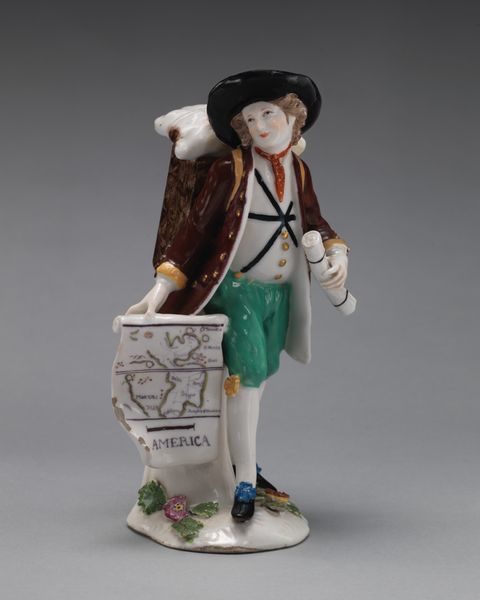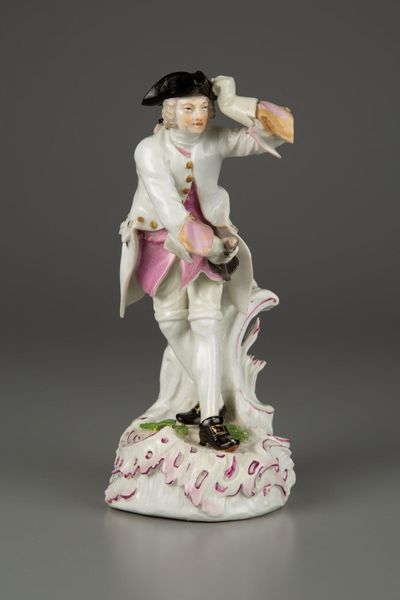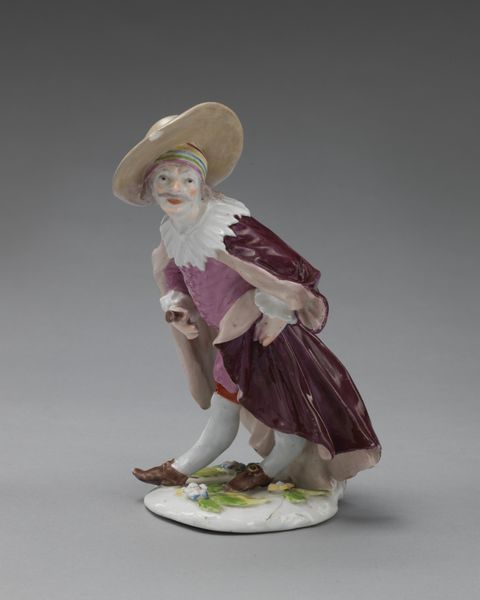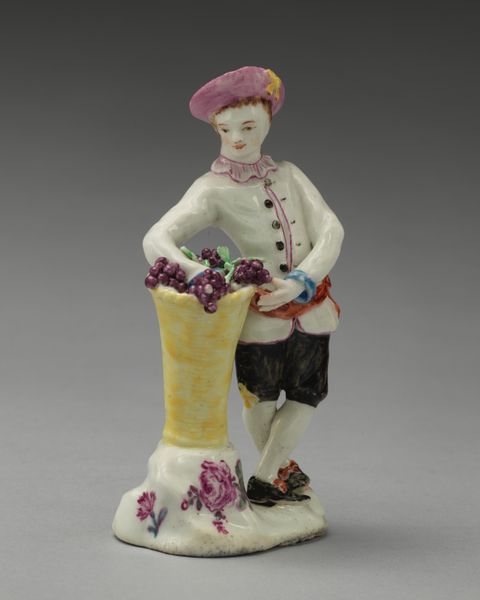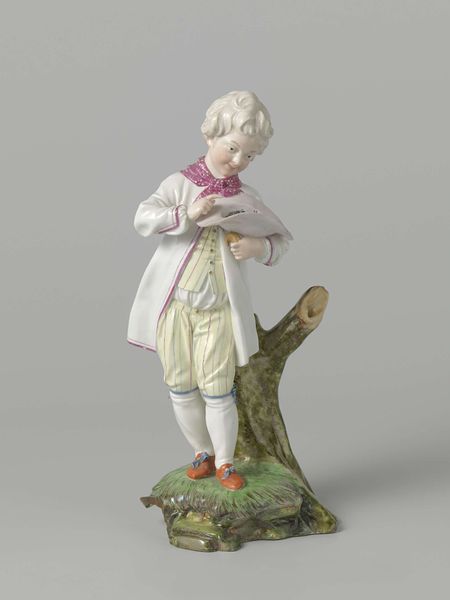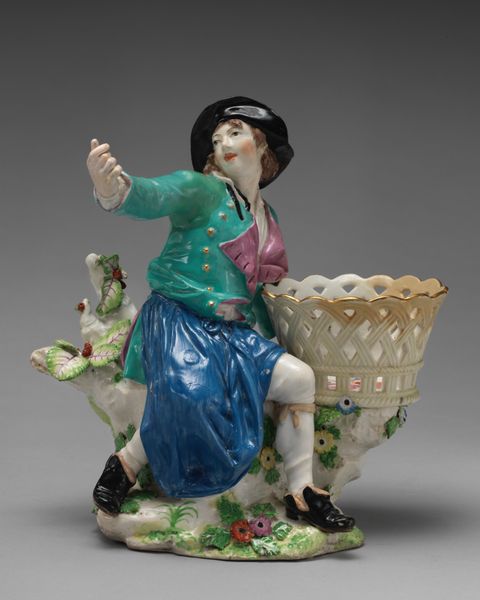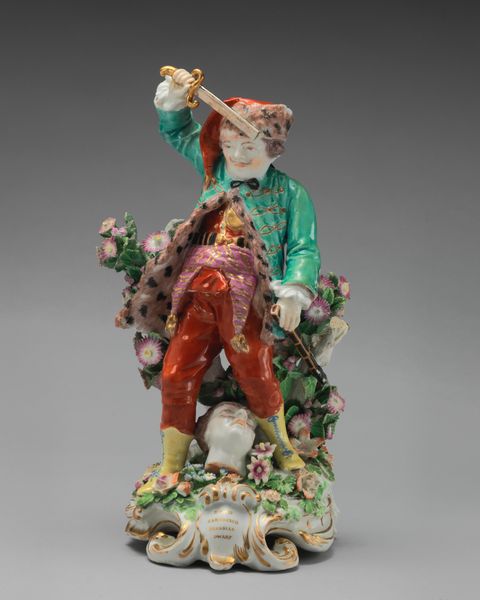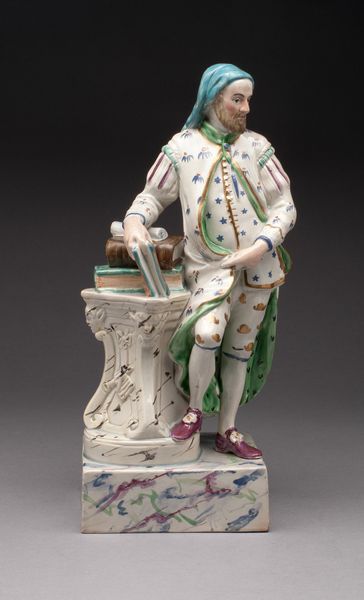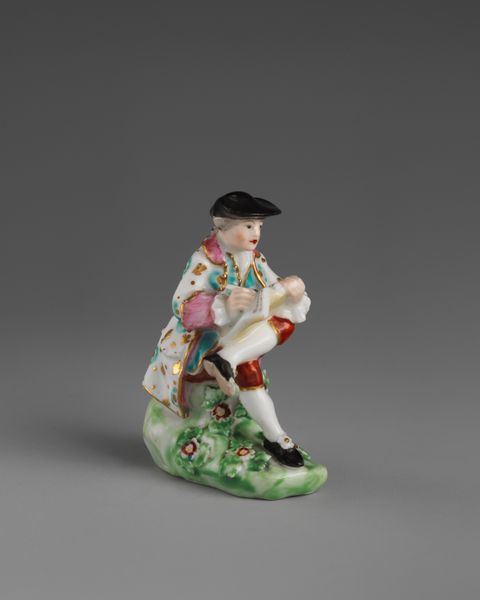
ceramic, porcelain, sculpture
#
ceramic
#
porcelain
#
sculptural image
#
sculpture
#
men
#
decorative-art
#
rococo
Dimensions: Height: 7 1/2 in. (19.1 cm)
Copyright: Public Domain
Curator: Standing before us is a piece titled "Chairmaker," a porcelain sculpture created by the Capodimonte Porcelain Manufactory around 1750 to 1760, currently housed at the Metropolitan Museum of Art. Editor: It has a surprisingly melancholic feel, doesn't it? For a Rococo piece, I expected something more jubilant. He seems almost burdened by his craft. Curator: That's fascinating. I think this piece offers an insight into the romanticized vision of labor within the decorative arts during the mid-18th century. The figure, with his carefully styled hat and delicate breeches, challenges the very idea of a tradesman. Editor: Right. Those aren't work clothes. The rosy pink in his trousers almost clashes with the artisan’s more typical garb, don’t you think? It makes me consider performativity and authenticity. This could be a commentary on class aspirations perhaps? Curator: Precisely! The symbolism of the tools – the green chair frame he carries, the bundle of rushes – represent the markers of labor and craft. Note, for example, the intentional depiction of craft within the aristocratic setting: The placement, colors, materials; it questions the social mobility in a changing European economy. Editor: Thinking of his attire, notice the carefully placed sash and gold embellishment – perhaps signalling aspiration? The pale palette lends a gentle aesthetic appeal. There is, too, something almost frozen about the scene – a capture of labour idealized rather than witnessed in a grittier environment. Curator: Consider that porcelain figures were popular collectables during the era. Figures such as this blur the lines of high and low, challenging rigid notions of social class in Europe, through decorative artwork, by idealizing trades in art pieces like this. Editor: The chair, the rushes, the pink pants… they create a narrative around idealized labor. This porcelain figure encapsulates that tension between aspiration, perception, and status—a tangible, preserved slice of a very complex history. Curator: Absolutely. We see how it speaks to ongoing conversations about how class is not necessarily linked to any intrinsic value system but more of an idea represented. Editor: Yes, and the symbolism embedded in the figure invites reflection upon social narratives constructed within the artistic lens. The image’s gentle impact encourages critical analysis, as it brings complex conversations in a graceful aesthetic appeal.
Comments
No comments
Be the first to comment and join the conversation on the ultimate creative platform.

